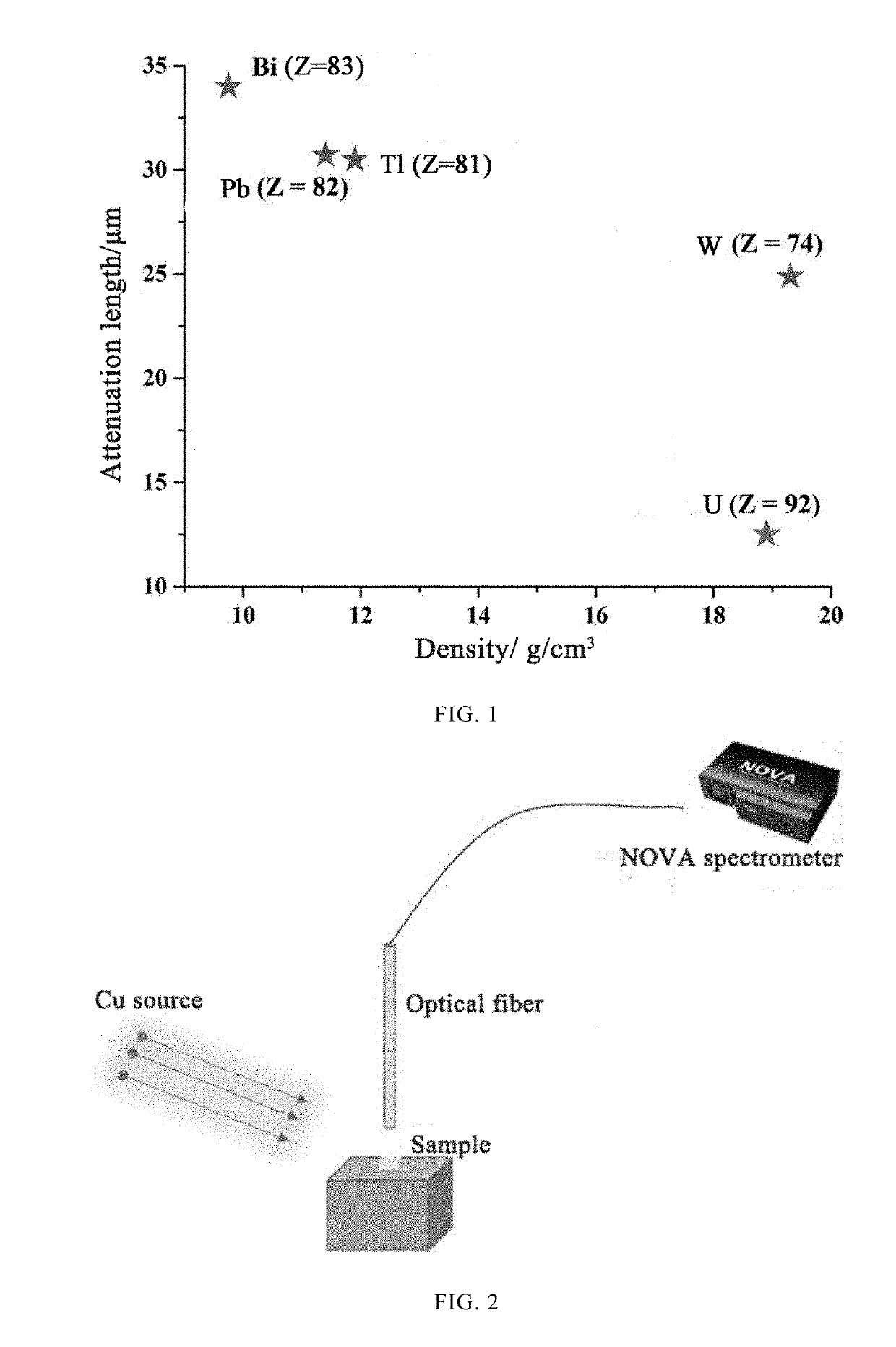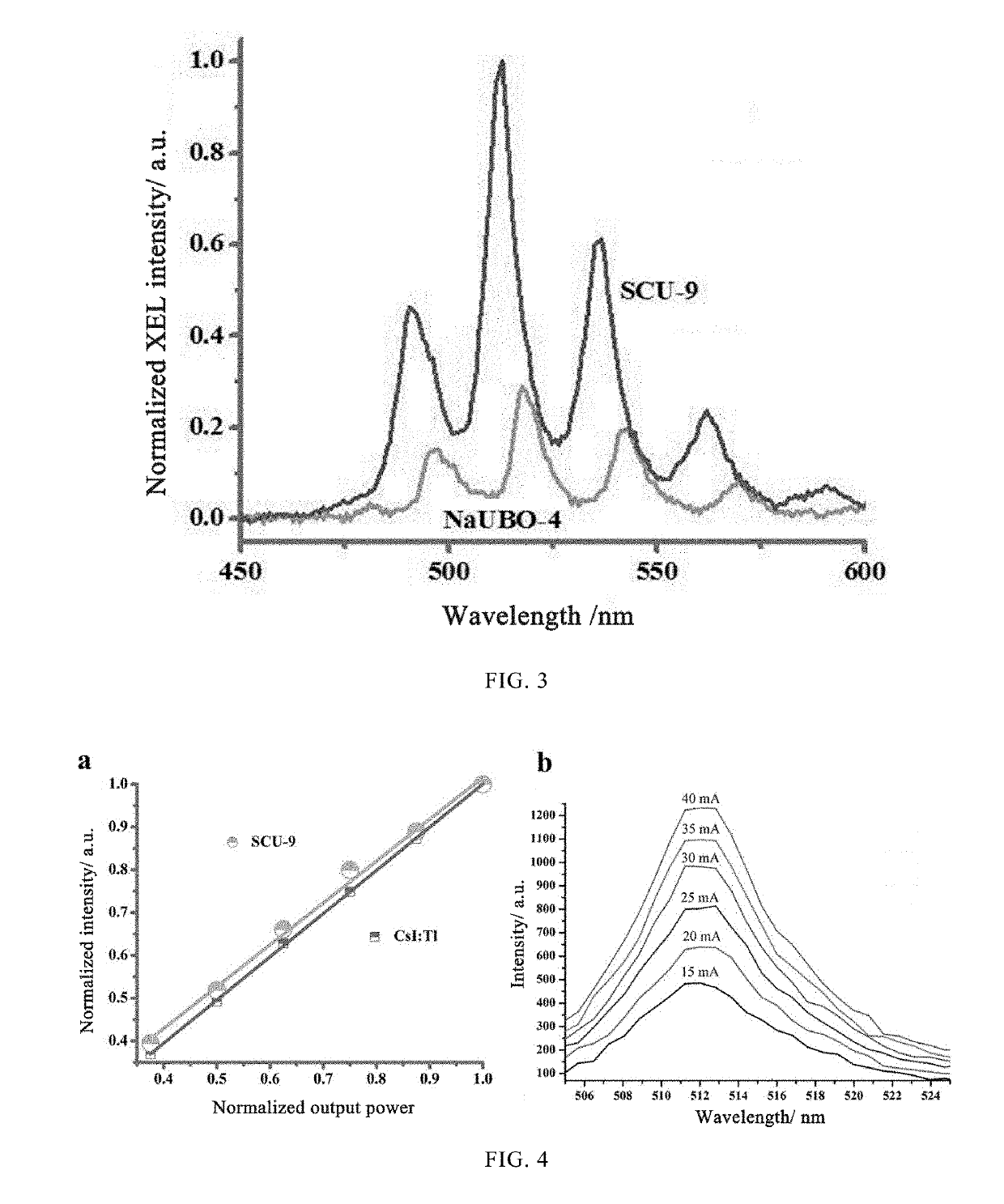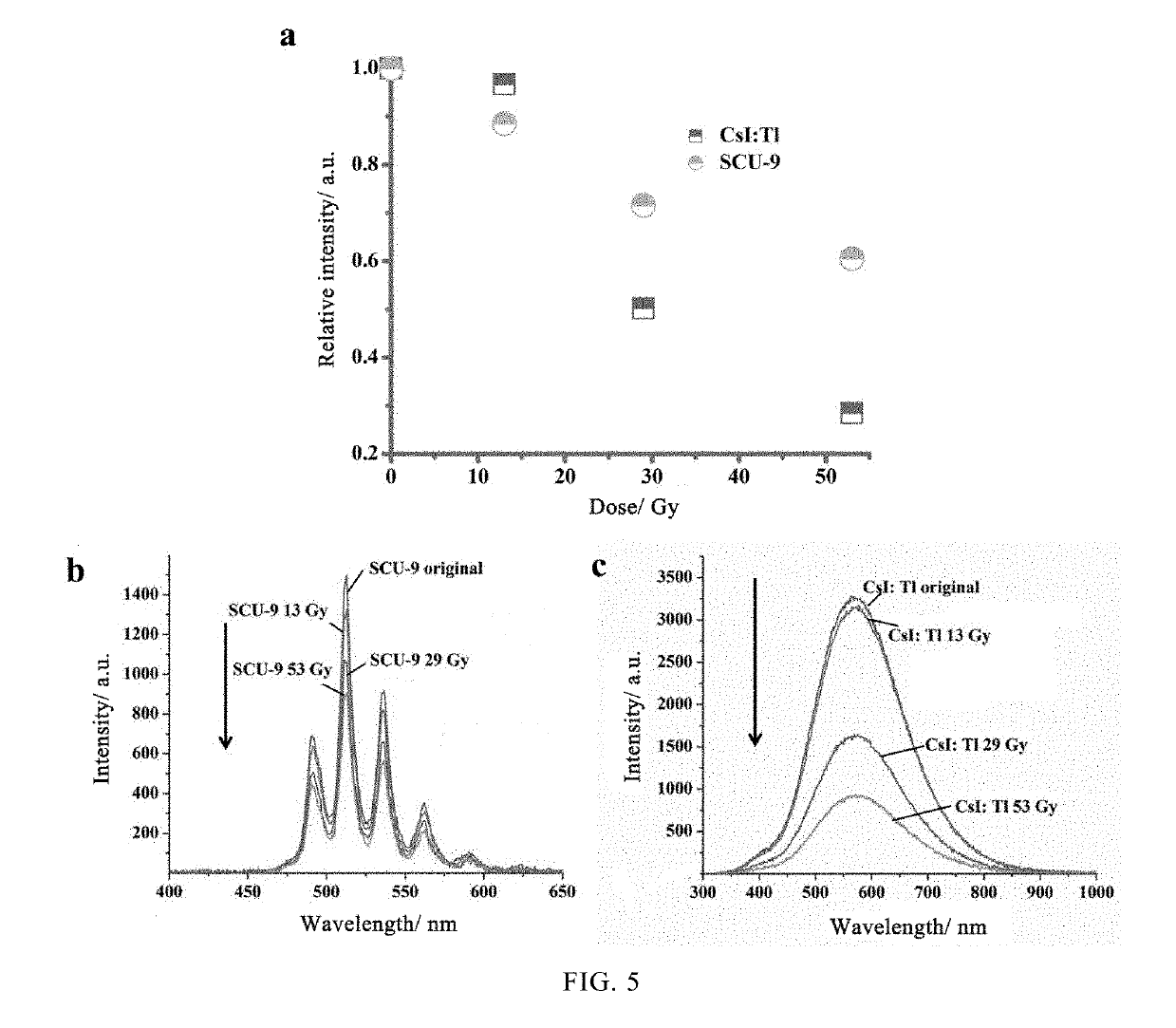Use of uranium-containing compound as scintillator
a technology of uranium-containing compounds and scintillators, which is applied in the field of scintillators, can solve the problems of less mature single crystal growth technology of such materials, low luminescence efficiency of pure inorganic salt crystals, and high cost, and achieves large design space and superior performan
- Summary
- Abstract
- Description
- Claims
- Application Information
AI Technical Summary
Benefits of technology
Problems solved by technology
Method used
Image
Examples
embodiment 1
[0038]Synthesis of SCU-9 Crystal
[0039]The reactants UO2(NO3)2.6H2O, H3BO3, and 1,3,5-benzenetricarboxylic acid were placed into a polytetrafluoroethylene reactor at a molar ratio of 1:10:1, a small amount of deionized water was added to dissolve the reactants. The resulting mixture was sealed, heated up to 200° C. and heated for 3 days, and then gradually cooled to room temperature. The product was washed with a large amount of boiling water, until the boric acid was completely dissolved. The resulting crystalline product was washed with ethanol, and then air dried at room temperature, to obtain the SCU-9 crystal. A central metal UO22+ of the crystalline product is coordinated with a carboxylic acid to form a one-dimensional linear polymer with a density of 2.85 g / cm3.
[0040]An X-ray tester was used to test the X-ray fluorescence spectrum of the SCU-9 crystal. The structure of the X-ray tester is shown in FIG. 2. The sample in FIG. 2 is the SCU-9 crystal in this embodiment, and the t...
embodiment 2
[0044]Synthesis of (NaBUO-4)
[0045]NaNO3, H3BO3, and UO2(NO3)2.6H2O were placed into a polytetrafluoroethylene reactor at a molar ratio of 3:15:1, a small amount of deionized water was added to dissolve the above reactants. The resulting mixture was sealed, heated up to 190° C. and heated for 1 day, and then gradually cooled to room temperature. The product was washed with a large amount of boiling water, until the boric acid was completely dissolved. The resulting crystalline product was washed with ethanol, and then air dried at room temperature, to obtain the (NaBUO-4).
[0046]Following the method as described in embodiment 1, the X-ray fluorescence spectrum of (NaBUO-4) was obtained. The result is as shown by a lower curve in FIG. 3.
embodiment 3
[0047]An uranium-containing organophosphate of Formula (II) has a structural formula below, which is referred to as ([TMA][(UO2)2(1,3-pbpH)(1,3-pbpH2)]) below:
[0048]The preparation method is as follows.
[0049]1,3-phenylenebis(phosphonic acid) (1,3-bppH4), tetrabutylammonium hydroxide, and UO2(NO3)2.6H2O were placed into a polytetrafluoroethylene reactor at a molar ratio of 2:2:1, 1 drop of hydrofluoric acid (HF) was added, and 1 mL of deionized water was added to dissolve the reactants. The resulting mixture was sealed, heated up to 200° C. and heated for 3 days, and then gradually cooled to room temperature. The product was washed with water, and then the resulting crystalline product was washed with ethanol, and air dried at room temperature, to obtain the compound [TMA][(UO2)2(1,3-pbpH)(1,3-pbpH2)], which can be used as a scintillator.
PUM
| Property | Measurement | Unit |
|---|---|---|
| Temperature | aaaaa | aaaaa |
| Composition | aaaaa | aaaaa |
| Intrinsic viscosity | aaaaa | aaaaa |
Abstract
Description
Claims
Application Information
 Login to View More
Login to View More - R&D
- Intellectual Property
- Life Sciences
- Materials
- Tech Scout
- Unparalleled Data Quality
- Higher Quality Content
- 60% Fewer Hallucinations
Browse by: Latest US Patents, China's latest patents, Technical Efficacy Thesaurus, Application Domain, Technology Topic, Popular Technical Reports.
© 2025 PatSnap. All rights reserved.Legal|Privacy policy|Modern Slavery Act Transparency Statement|Sitemap|About US| Contact US: help@patsnap.com



